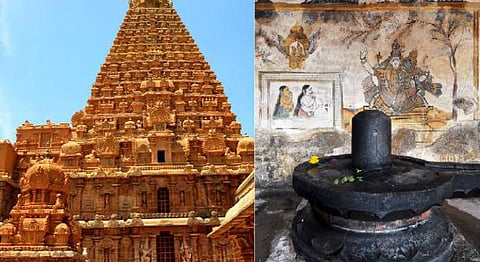
- HOMEGROWN WORLD
- #HGCREATORS
- #HGEXPLORE
- #HGVOICES
- #HGSHOP
- CAREERS
- ABOUT US
- CONTACT US

Most of the tourist attractions that India are accredited to the subcontinent’s heritage and preservation of ancient and historical elements. The South of India upholds this legacy with the various temples present in the region. These temples represent the affluence of the rich and cultural heritage of the place in pre-colonial times.
The Brihadeshwara Temple in Tanjavur, Tamil Nadu is the world’s first granite temple. A temple which is 1000 years old, Brihadeshwara is a Hindu Temple dedicated to Lord Shiva. It is unlike other temples and architectural treasures of the state or the country and holds immense cultural significance.
History of The Temple
The temple, also known by the names Periya Kovil, Rajarajeshwara Temple and Rajarajesvaram, is a prime example of Dravidian architecture and was built during the Chola period. The emperor that ordered the building of the temple was Raja Raja Chola I, who overlooked its completion in 1010 AD.
In 1002 CE, Arulmozhivarman was the Tamil emperor who laid out the foundations of the temple. Taken as an architectural exemplar, it is said to showcase a pure form of a Dravidian style of architecture in temples. As a representative of the ideology of Southern India’s Tamil Civilisation, the temples ‘testifies to the brilliant achievements in architecture, painting, bronze casting and sculpture that took place during this period’. Rajaraja named this temple Rajarejesvaram but the temple is also known by the deity Shiva’s name — Peruvudaiyarkovil.
The Architecture
This Temple at Tanjavur is the world’s first granite temple. The layout of the temple is asymmetrical and axial and follows these geometric rules. With the building of this temple, the emergence of features like multifaceted columns along with projecting signals of square capitals was seen.
The inscriptions on the walls of the temple trace the rise and fall of the Chola reign. It shows us when they were ousted by the Pandyas who were later thrown out by the Vijayanagara Empire. The region was ruled by the Tanjore Nayaks till the mid-17th century. Eventually, after the Tajore were captured by the Marathas, it fell into the hands of the British.
There is situated a stone lingam to act as Shiva’s representation in the temple and this is covered by a vimanan that is around 216 feet tall. Built with stones that are bonded without any motor, the topmost stone is an engineering marvel that weighs eighty tons.
If you enjoyed reading this, we suggest you read
